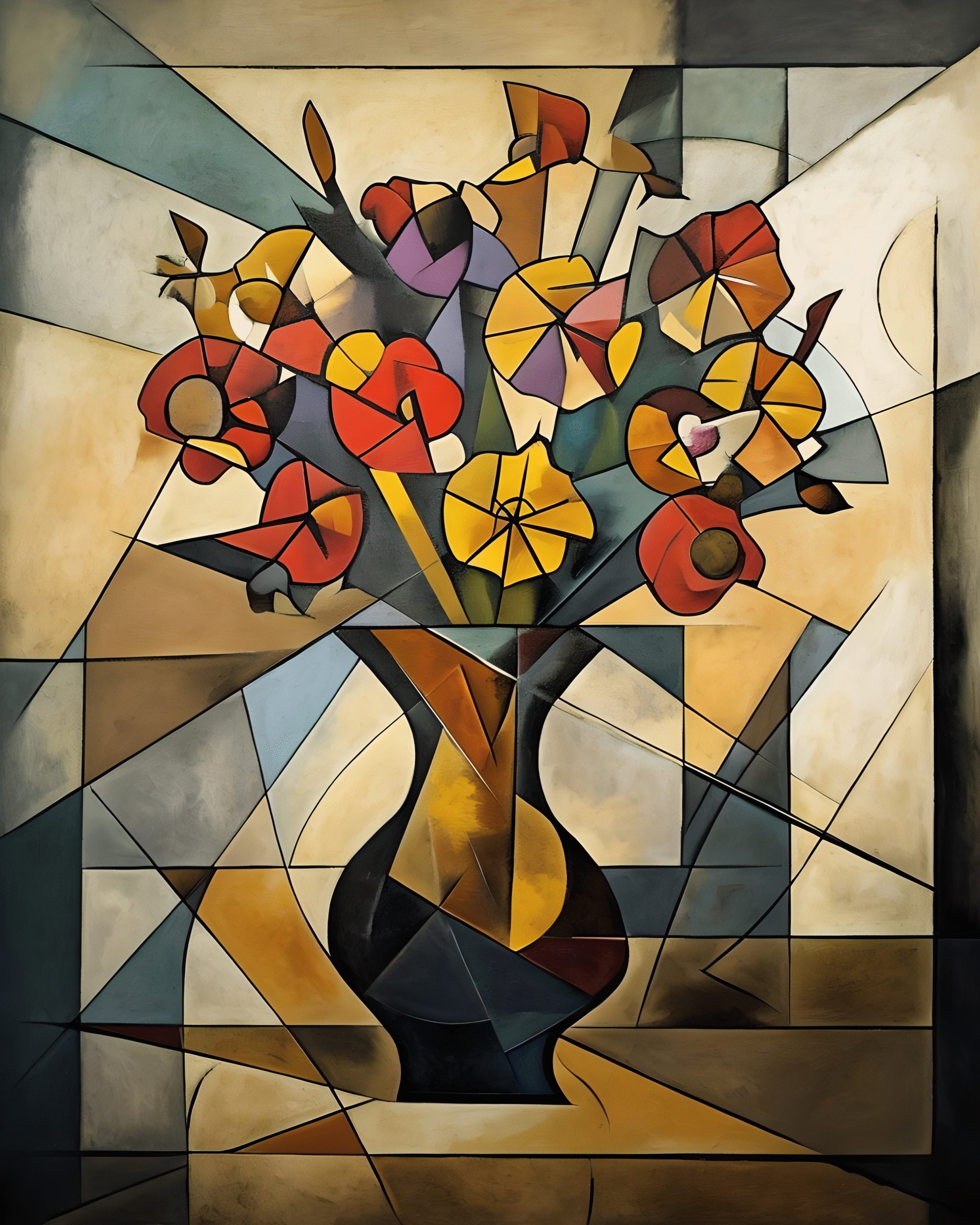Cubism is one of the most revolutionary movements in modern art history. Pioneered by Pablo Picasso and Georges Braque in the early 20th century, Cubism abandoned realistic representation in favor of geometric abstraction, multiple viewpoints, and radical experimentation. It laid the foundation for many key trends in modern and abstract art.
🕰 What Is Cubism? A Timeline of Its Development

Cubism emerged in France around 1907, challenging traditional artistic conventions and reshaping the visual language of painting. The movement is typically divided into two main phases:
1. Analytical Cubism (1909–1912)
- Deconstruction of subjects into geometric shapes and fragmented planes
- Limited color palette (browns, grays, earth tones)
- Complex, almost abstract visual forms
- Focused on structure over realism
2. Synthetic Cubism (1912–1914)
- Introduction of collage and mixed media
- Brighter, more vivid color usage
- Simpler shapes and more decorative compositions
- Emphasis on reconstructing rather than analyzing forms
Although Cubism’s most active phase ended by the 1920s, its influence lives on in virtually all branches of 20th-century modern art.
🎨 Famous Cubist Artists You Should Know
Pablo Picasso
Often considered the father of Cubism, Picasso’s painting Les Demoiselles d’Avignon (1907) shattered classical forms. His Cubist period featured groundbreaking works that combined African, Iberian, and modern influences.
Georges Braque
Picasso’s close collaborator, Braque emphasized form, spatial depth, and the balance of composition. His restrained color choices and structural experimentation helped define the Analytical Cubist style.
Juan Gris
Known for his precise, intellectual approach, Gris played a key role in developing Synthetic Cubism. His use of bold color and balanced layout made his work accessible and highly structured.
Fernand Léger
Léger merged Cubism with industrial imagery, creating futuristic works featuring mechanical parts, pipes, and bold contrasts. His style evolved into what’s often called Tubism.
Robert Delaunay
Delaunay’s colorful experiments evolved into Orphism, a vibrant offshoot of Cubism that emphasized light and rhythm using bold hues and circular forms.
🧩 Key Characteristics of Cubist Painting
Understanding Cubist art involves recognizing these defining traits:
- Geometric abstraction: Subjects are broken into cubes, cylinders, cones
- Multiple perspectives: A single object shown from various angles simultaneously
- Flattened space: Traditional perspective is abandoned
- Collage elements: Use of real materials like newspaper, wallpaper, fabric
- Muted or vibrant color schemes: Depending on the phase (Analytical vs. Synthetic)
- Typography and symbols: Inclusion of letters, numbers, logos — early sign of mixed media art
These stylistic choices created an entirely new visual language that remains influential to this day.
🌍 Why Cubism Mattered: Its Legacy in Modern and Abstract Art
Cubism wasn’t just a style — it was a conceptual revolution. Here’s why it still matters:
- Redefined how we see space and form in painting
- Challenged centuries of artistic tradition by rejecting one-point perspective
- Opened the door to abstract art, inspiring movements like Futurism, Dada, Constructivism, and Surrealism
- Influenced fields beyond painting, including architecture, design, sculpture, and typography
- Helped usher in the age of modernism
Even today, Cubist aesthetics continue to inform digital art, branding, and contemporary design.
📌 Final Thoughts: Cubism as a Creative Breakthrough
Cubism forever changed the definition of what art could be. By challenging realism and inventing a new visual grammar, Cubist artists didn’t just depict the world — they reimagined it.
Whether you’re an artist, designer, or art lover, understanding Cubism means recognizing the moment when art stopped imitating life — and began shaping how we interpret it.
